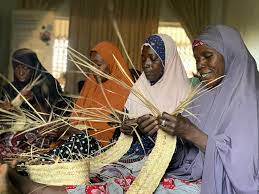
In Nigeria, thrift collection is a popular business model that has been around for decades. The concept of thrift collection is not unique to Nigeria. It is a common practice in many parts of the world and has been used as a means of savings, credit, and investment. However, in Nigeria, thrift collection has taken on a unique form, with its own terminology and cultural significance.
In Nigeria, thrift collection, also known as Osusu or Ajo, is a common way of saving money. It involves a group of people contributing money to a central fund, and then each member takes turns receiving a lump sum of money. The amount of money contributed and the duration of the cycle can vary depending on the agreement of the group.
Osusu and Ajo are the two (2) most common names for thrift collection in Nigeria. Osusu is the term used in the southern part of the country, while Ajo is used in the northern part. The basic principle behind both Osusu and Ajo is the same. Members of the group make regular contributions, and each member receives the total collected sum at an agreed-upon time.
Osusu and Ajo are primarily used as a means of savings and credit. Many people in Nigeria, especially those in low-income groups, find it difficult to save money or access credit through formal financial institutions. Osusu and Ajo provide an alternative means of savings and credit that is accessible to a wide range of people.
Thrift collection is a great way for people to save money and invest in their future, and it can also be a profitable business venture.
This article will provide a step-by-step guide on how to start a thrift collection business in Nigeria.
Step 1: Identify Your Target Market
The first step in starting a thrift collection business is to identify your target market. Thrift collection is popular among different groups of people, including market women, civil servants, students, and other low-income earners.
You need to choose a target market that suits your business plan and goals. You can start by researching the needs of your target market, their income level, and their spending habits. This information will help you tailor your services to meet the needs of your target market.
Step 2: Determine Your Business Model
The next step is to determine your business model. There are different ways to run a thrift collection business, and you need to choose a model that suits your target market and your goals. Some of the common business models include:
Traditional thrift collection: This involves a group of people contributing money to a central fund, and then each member takes turns receiving a lump sum of money. The cycle can be weekly, monthly, or any other duration agreed upon by the group.
Online thrift collection: This involves using a digital platform to collect and distribute funds. Members can contribute money through a website or mobile app, and the distribution of funds is automated.
Hybrid thrift collection: This involves combining the traditional and online models to create a more flexible and convenient system. For instance, members can contribute money online, but the distribution of funds can be done in person.
Step 3: Develop a Business Plan
Once you have identified your target market and chosen your business model, you need to develop a business plan. This plan should outline your goals, objectives, marketing strategy, financial projections, and any other relevant details. A well-written business plan will help you secure funding, attract potential investors, and guide you as you launch and grow your business.
Step 4: Register Your Business
To operate a thrift collection business in Nigeria, you need to register your business with the Corporate Affairs Commission (CAC). This involves choosing a business name, obtaining a Tax Identification Number (TIN), and registering your business with the CAC.
You also need to obtain any necessary permits and licenses from regulatory bodies such as the Central Bank of Nigeria and the Securities and Exchange Commission.
Step 5: Recruit Members
Once you have registered your business, the next step is to recruit members. You can start by reaching out to your target market and advertising your services.
You can also use social media platforms such as Facebook, Twitter, and Instagram to promote your business. To attract more members, you need to offer competitive interest rates and other incentives.
Step 6: Establish Trust and Build Relationships
One of the most important aspects of running a thrift collection business is building trust and relationships with your members. You need to establish a transparent and accountable system that ensures that members' contributions are safe and secure. You also need to communicate effectively with your members and keep them informed about any changes or updates in your system.
Step 7: Automate Your System
As your business grows, you need to automate your system to make it more efficient and convenient for your members. You can use digital platforms such as mobile apps and websites to collect and distribute funds.
Step 8: Scale Your Business
Once you have established a successful thrift collection business, you can consider scaling up your operations. You can expand your membership base, offer additional services, or explore new markets. However, it is essential to do so gradually and with caution to avoid overextending your resources.
Some of the challenges of thrift collection in Nigeria and their impact on the business.
Lack of Trust: One of the primary challenges of thrift collection in Nigeria is the issue of trust. In Osusu or Ajo, members are expected to contribute a fixed amount of money regularly, and the collected funds are given to a member of the group.
However, some members may fail to contribute their expected share of the funds, or they may abscond with the collected funds. This lack of trust is a significant hindrance to the growth of the Osusu or Ajo business, as it discourages new members from joining the group.
To overcome this challenge, thrift collectors must establish a system of checks and balances to ensure that members contribute their share of the funds and that the collected funds are given to the intended recipient. Also, the group must have a clear set of rules and regulations that outline the consequences of defaulting on contributions or absconding with the collected funds.
Low Level of Financial Literacy: Another significant challenge of thrift collection in Nigeria is the low level of financial literacy among its members. Many Osusu or Ajo members lack adequate knowledge about basic financial management principles, such as budgeting, saving, and investment. This lack of financial knowledge makes it difficult for members to make informed decisions about their contributions and how to manage the funds they receive.
To overcome this challenge, thrift collectors must provide financial education to their members. This education should cover basic financial management principles, such as budgeting, saving, investment, and debt management. Also, thrift collectors can partner with financial institutions to provide financial literacy training to their members.
Poor Record Keeping: Effective record keeping is essential for the success of any business, including Osusu or Ajo. However, many thrift collectors in Nigeria lack the necessary skills and tools to maintain accurate and up-to-date records. This lack of proper record-keeping can lead to disputes among members and can make it difficult to track the contributions and payouts.
To overcome this challenge, thrift collectors must establish a proper record-keeping system. This system should include a ledger that records every member's contributions and payouts, as well as a system for tracking the frequency of contributions and payouts.
High Operating Costs: The cost of running a thrift collection business in Nigeria can be high, especially when considering the cost of renting a venue, transportation, and administrative expenses. These costs can reduce the profitability of the business and discourage potential thrift collectors from entering the market.
To overcome this challenge, thrift collectors can explore the use of technology to reduce operating costs. For instance, they can use mobile applications to collect contributions and disburse payouts, eliminating the need for a physical venue. Also, thrift collectors can leverage the internet to reduce marketing costs by using social media and other online platforms to promote their business.
Lack of Regulatory Framework: The Osusu or Ajo business in Nigeria operates in a regulatory vacuum, as there are no specific regulations governing its operations.
Benefits of Osusu and Ajo
Osusu and Ajo provide several benefits to members. The most significant advantage is that it serves as an alternative means of savings and credit. Many people in Nigeria do not have access to formal financial institutions, and those who do may not have the means to save regularly or access credit.
Osusu and Ajo provide a means for people to save money regularly and access credit when they need it. Members can use their share of the collected sum to start a business, pay school fees, or cover unexpected expenses.
Another significant advantage of Osusu and Ajo is that they promote financial discipline. Members are required to contribute regularly, and failure to do so can result in penalties or expulsion from the group. This creates a sense of accountability and encourages members to be more disciplined with their finances.
Osusu and Ajo also promote social cohesion and community development. The groups are usually organized by trusted individuals in the community, and members are typically friends, family, or neighbors. This creates a sense of community and encourages members to work together for their mutual benefit.
In recent times, thrift collection has evolved into a business opportunity for many entrepreneurs in Nigeria. Starting a thrift collection business can be lucrative, but it requires careful planning and execution.






















